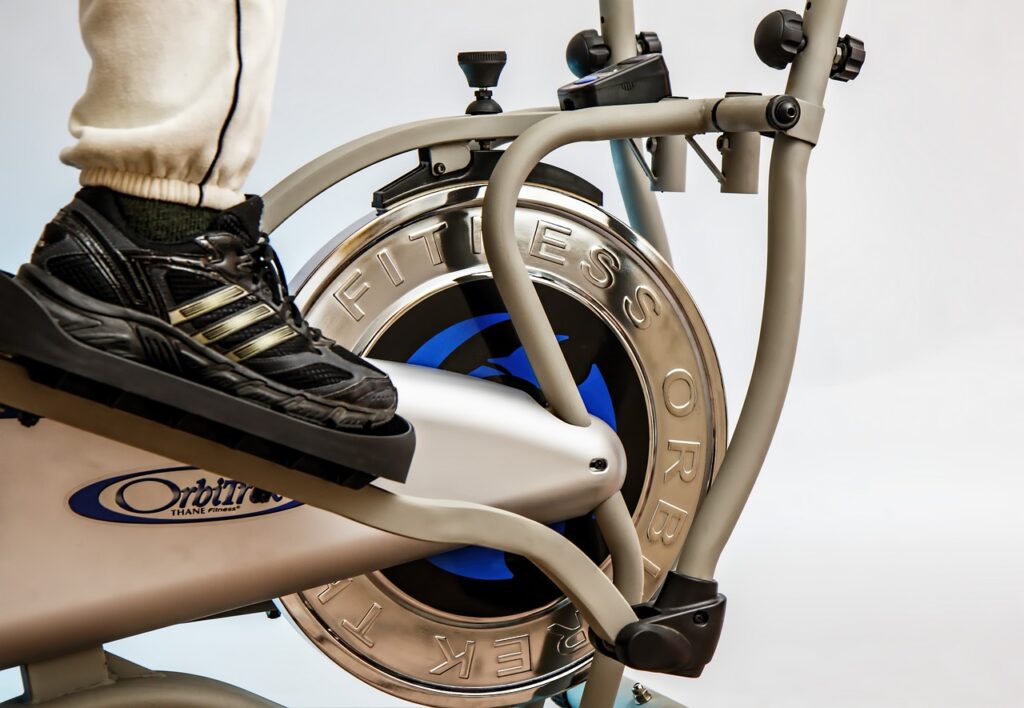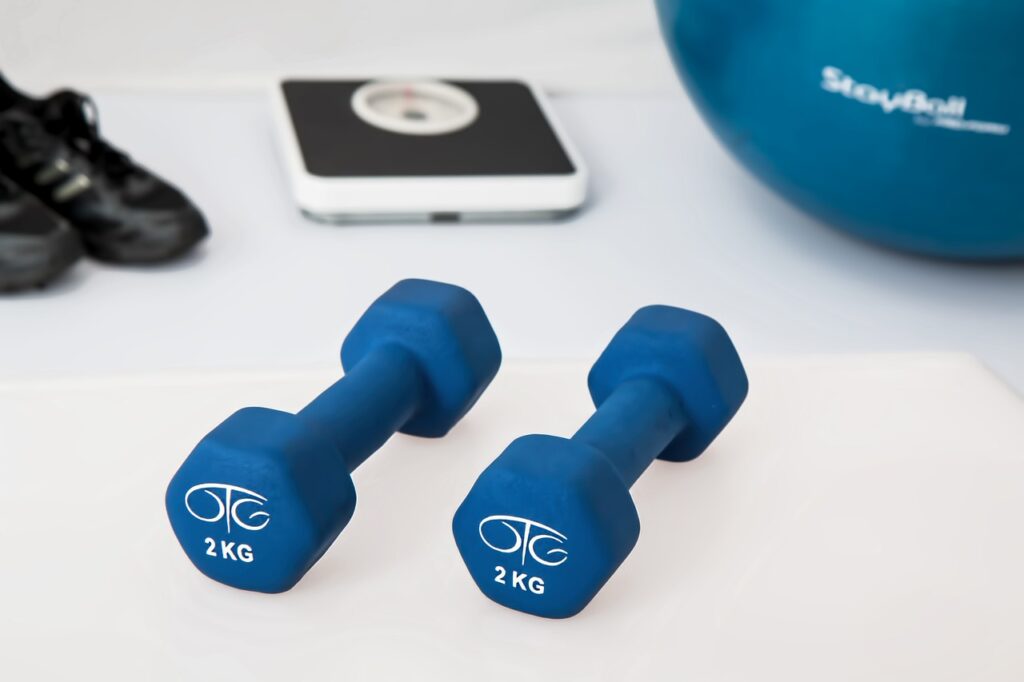
Asthma is a chronic respiratory disease that affects millions of people worldwide. It can make it difficult to breathe, especially during physical activities such as exercise. However, regular exercise is essential for maintaining a healthy weight and improving overall health. Therefore, it is important for asthma patients to find the right exercise routine that can help them lose weight without triggering asthma symptoms.
Research has shown that exercise can improve lung function and reduce inflammation in people with asthma. However, some types of exercise can trigger asthma symptoms such as shortness of breath, wheezing, and chest tightness. Therefore, it is important for asthma patients to work closely with their healthcare provider to develop an exercise plan that is safe and effective for them.
In this article, we will explore the best weight loss exercises for asthma patients. We will discuss the benefits of exercise for asthma patients, how to develop an exercise plan, and the types of exercises that are safe and effective for people with asthma. By following these guidelines, asthma patients can achieve their weight loss goals while maintaining good asthma control.
Table of Contents
Understanding Asthma and Exercise
The Impact of Asthma on Physical Activity
Asthma is a chronic respiratory disease that affects millions of people worldwide. It is characterized by inflammation and narrowing of the airways, which can make breathing difficult. Asthma symptoms can be triggered by a variety of factors, including exercise, cold air, and allergens.
For asthma patients, physical activity can be challenging. Exercise-induced bronchoconstriction (EIB) is a common symptom in asthma patients, which causes the airways to narrow during or after exercise, making it difficult to breathe. This can lead to reduced physical activity levels and a sedentary lifestyle, which can have negative impacts on overall health.
Benefits of Exercise for Asthma Patients
Despite the challenges, exercise can be an effective tool for managing asthma symptoms and improving overall health. Regular exercise can help improve lung function, reduce inflammation, and strengthen respiratory muscles. It can also help with weight management, which is important for asthma patients as obesity can exacerbate asthma symptoms.
Asthma patients should work with their healthcare provider to develop an exercise plan that is safe and effective for their individual needs. This may include warm-up and cool-down exercises, using an inhaler before exercise, and avoiding triggers that can exacerbate asthma symptoms.
In conclusion, while asthma can present challenges for physical activity, exercise can be an effective tool for managing symptoms and improving overall health. With proper guidance and precautions, asthma patients can safely and effectively incorporate exercise into their daily routine.
Principles of Weight Loss for Asthma Patients
Caloric Deficit and Nutritional Considerations
To lose weight, asthma patients must create a caloric deficit by consuming fewer calories than they burn. This can be achieved by reducing portion sizes, choosing lower calorie options, and increasing physical activity. It is important to maintain a balanced and nutritious diet to ensure that the body is getting the necessary nutrients to function properly.
Asthma patients should consult with a healthcare professional or registered dietitian to develop a personalized meal plan that takes into account their specific dietary needs and any medications they may be taking. It is also important to stay hydrated and limit intake of foods that trigger asthma symptoms, such as dairy or processed foods high in sodium.
Safe Exercise Intensity Levels
Exercise is an important component of weight loss for asthma patients, but it is important to choose activities that are safe and appropriate for their condition. Low to moderate intensity activities, such as walking, swimming, or cycling, are generally well-tolerated by asthma patients.
It is important to start slowly and gradually increase intensity and duration of exercise over time. Asthma patients should always have their rescue inhaler with them during exercise and be aware of any warning signs of an asthma attack, such as shortness of breath or wheezing.
By following these principles, asthma patients can safely and effectively lose weight and improve their overall health.
Recommended Exercises for Asthma Patients
Low-Impact Aerobic Exercises
Asthma patients can benefit from low-impact aerobic exercises that help strengthen their cardiovascular system. Walking, cycling, and swimming are great options for low-impact aerobic exercises. These exercises can be performed at a moderate intensity for 30-60 minutes, 3-5 times per week. It is important to start slow and gradually increase the intensity and duration of the exercise over time.
Strength Training Adaptations
Strength training exercises can help improve muscle strength and endurance, which can be beneficial for asthma patients. However, it is important to start with light weights and progress slowly to avoid triggering asthma symptoms. Resistance bands and bodyweight exercises such as push-ups, squats, and lunges are great options for strength training adaptations.
Flexibility and Stretching Exercises
Flexibility and stretching exercises can help improve range of motion, reduce muscle tension, and enhance overall physical performance. Yoga, Pilates, and stretching exercises are great options for flexibility and stretching exercises. It is important to start with gentle stretches and progress slowly to avoid triggering asthma symptoms.
In conclusion, asthma patients can benefit from a combination of low-impact aerobic exercises, strength training adaptations, and flexibility and stretching exercises. It is important to start slow and progress gradually to avoid triggering asthma symptoms.
Breathing Techniques During Exercise
Pursed Lip Breathing
During exercise, asthma patients may experience shortness of breath, which can make it difficult to continue with the activity. Pursed lip breathing is a technique that can help to alleviate this symptom. This technique involves inhaling through the nose and exhaling through pursed lips.
Pursed lip breathing helps to slow down the breathing rate and increase the amount of air that is exhaled. It also helps to keep the airways open for a longer period of time, which can reduce the likelihood of an asthma attack.
Diaphragmatic Breathing
Diaphragmatic breathing is another technique that can be helpful for asthma patients during exercise. This technique involves breathing deeply from the diaphragm, rather than shallow breathing from the chest.
Diaphragmatic breathing helps to increase the amount of oxygen that is taken in and improve the efficiency of the lungs. It also helps to reduce the amount of work that is required by the chest muscles, which can reduce the likelihood of shortness of breath during exercise.
In conclusion, breathing techniques such as pursed lip breathing and diaphragmatic breathing can be helpful for asthma patients during exercise. These techniques can help to alleviate symptoms such as shortness of breath and reduce the likelihood of an asthma attack. It is important for asthma patients to consult with their healthcare provider before starting any exercise program and to use these techniques as directed.
Creating a Sustainable Exercise Plan
Setting Realistic Goals
When creating an exercise plan, it is important for asthma patients to set realistic goals that take into account their condition. It is recommended to start with low-intensity exercises such as walking or swimming, and gradually increase the intensity and duration over time. It is also important to set achievable goals and track progress to stay motivated.
Incorporating Exercise into Daily Routine
To make exercise a sustainable habit, it is recommended to incorporate it into daily routine. This can be done by scheduling exercise at the same time every day, finding a workout buddy for accountability, or choosing activities that are enjoyable. It is also important to have a backup plan in case of bad weather or other unforeseen circumstances.
Here are some tips for incorporating exercise into daily routine:
- Choose activities that can be done at home, such as yoga or bodyweight exercises.
- Take breaks during the workday to stretch or take a short walk.
- Use a pedometer or fitness tracker to track daily steps and set goals.
- Find a workout buddy or join a fitness class to stay motivated and accountable.
By setting realistic goals and incorporating exercise into daily routine, asthma patients can create a sustainable exercise plan that helps them achieve their weight loss goals while managing their condition.
Monitoring Asthma Symptoms
Using a Peak Flow Meter
A peak flow meter is a simple device that measures how fast air can be blown out of the lungs. It can be used to monitor asthma symptoms and to determine the severity of an asthma attack. Asthma patients should use a peak flow meter regularly to keep track of their lung function and to identify any changes in their breathing patterns.
To use a peak flow meter, the patient should take a deep breath and then blow into the device as hard and fast as possible. The meter will measure the peak flow rate, which is the maximum speed at which air can be blown out of the lungs. This measurement can be recorded in a diary or chart to help the patient and their doctor monitor their asthma symptoms over time.
Identifying and Managing Exercise-Induced Bronchoconstriction
Exercise-induced bronchoconstriction (EIB) is a common problem for asthma patients. It occurs when physical activity triggers the narrowing of the airways, making it difficult to breathe. EIB can be managed with the help of a doctor or asthma specialist.
Asthma patients should be aware of the symptoms of EIB, which include coughing, wheezing, chest tightness, and shortness of breath. They should also take steps to prevent EIB by warming up before exercise, using a bronchodilator inhaler before exercise, and avoiding exercise in cold, dry environments.
If EIB does occur, the patient should stop exercising and use their bronchodilator inhaler as directed. They should also rest until their breathing returns to normal. If EIB is a persistent problem, the patient may need to adjust their medication or treatment plan with the help of their doctor or asthma specialist.
Collaboration with Health Professionals
Working with an Asthma Specialist
Asthma patients who want to lose weight should collaborate with an asthma specialist. The specialist can provide guidance on how to exercise safely without triggering asthma symptoms. They can also help patients develop an asthma action plan to manage symptoms during exercise.
Consulting a Physical Therapist or Exercise Physiologist
Patients with asthma who want to lose weight should consider consulting a physical therapist or exercise physiologist. These professionals can help design an exercise program that is safe and effective for asthma patients. They can also provide guidance on how to modify exercises to avoid triggering asthma symptoms.
In conclusion, collaboration with health professionals is essential for asthma patients who want to lose weight through exercise. Asthma specialists, physical therapists, and exercise physiologists can provide guidance and support to help patients exercise safely and effectively.
Safety Precautions and Emergency Procedures
Recognizing Asthma Attack Warning Signs
It is crucial for asthma patients to be aware of the warning signs of an impending asthma attack. These signs may vary from person to person, but some common symptoms include wheezing, coughing, shortness of breath, chest tightness, and difficulty breathing. It is important to take note of any changes in breathing patterns or any unusual symptoms, as this could be an indication of an oncoming asthma attack.
Emergency Inhaler Usage
Asthma patients should always carry their prescribed inhaler with them at all times. In the event of an asthma attack, the inhaler should be used immediately. It is important to follow the correct inhalation technique and dosage as prescribed by the doctor. If the inhaler does not provide relief, seek medical attention immediately.
In case of a severe asthma attack, it is important to call for emergency medical services right away. It is also important to keep a written asthma action plan that outlines the steps to be taken in case of an emergency. This plan should include emergency contact numbers, medication dosage, and steps to be taken in case of severe asthma attacks.
In conclusion, asthma patients should take the necessary precautions to avoid triggering an asthma attack and be aware of the warning signs. It is important to carry the prescribed inhaler at all times and follow the correct inhalation technique. In case of a severe asthma attack, seek medical attention immediately and call for emergency medical services.
Adapting the Exercise Environment
Indoor Air Quality Considerations
Asthma patients should be mindful of indoor air quality when exercising. Poor air quality can trigger asthma symptoms and make it difficult to breathe. To improve air quality, consider the following:
- Use a high-efficiency particulate air (HEPA) filter to remove allergens and pollutants from the air.
- Avoid exercising near sources of pollution, such as smoke, chemical fumes, and strong odors.
- Keep the indoor humidity level between 30% and 50% to prevent mold growth.
Outdoor Exercise and Allergen Exposure
Outdoor exercise can expose asthma patients to allergens, such as pollen, dust, and mold spores. To minimize exposure to allergens, consider the following:
- Check the air quality index (AQI) before exercising outdoors. If the AQI is high, consider exercising indoors instead.
- Exercise during times when allergen levels are lower, such as after a rainstorm or in the early morning.
- Wear a mask to filter out allergens while exercising outdoors.
By adapting the exercise environment, asthma patients can reduce their risk of triggering asthma symptoms and improve their overall health.
Success Stories and Motivation
Many asthma patients often feel discouraged and unmotivated to exercise due to their condition. However, there are success stories of asthma patients who have lost weight and improved their overall health through exercise.
One such success story is that of Sarah, a 35-year-old woman who was diagnosed with asthma at a young age. Despite her condition, she was determined to lose weight and improve her health. She started with simple exercises like walking and gradually increased her intensity over time. With the help of her doctor, she was able to find the right balance of medication and exercise to manage her asthma symptoms. Through her dedication and hard work, Sarah was able to lose 30 pounds and improve her lung function.
Another success story is that of John, a 45-year-old man who was also diagnosed with asthma. He started with low-impact exercises like swimming and cycling and gradually increased his intensity over time. With the help of his doctor, he was able to manage his asthma symptoms and improve his overall health. Through his perseverance and dedication, John was able to lose 50 pounds and reduce his reliance on medication.
These success stories serve as motivation for asthma patients who may feel discouraged or unsure about exercising. It is important to remember that with the right guidance and determination, asthma patients can achieve their weight loss and health goals through exercise.
Frequently Asked Questions
What are safe weight loss exercises for individuals with asthma?
Individuals with asthma should consult with their healthcare provider before starting any exercise program. However, some safe exercises for asthmatics looking to lose weight include walking, swimming, cycling, and low-impact aerobics.
How does asthma impact the ability to perform physical activity for weight loss?
Asthma can make physical activity more difficult due to shortness of breath, wheezing, and coughing. However, with proper management and medication, individuals with asthma can safely engage in physical activity for weight loss.
What dietary considerations should asthma patients take into account when trying to lose weight?
Asthma patients should aim for a healthy and balanced diet that includes plenty of fruits, vegetables, whole grains, lean protein, and healthy fats. They should also avoid any trigger foods that may exacerbate their asthma symptoms.
Are there specific breathing techniques that aid in exercise for asthmatic weight loss?
Some breathing techniques, such as pursed lip breathing and diaphragmatic breathing, can help individuals with asthma control their breathing during exercise. It is recommended to consult with a healthcare provider or respiratory therapist for proper instruction.
How can asthmatics balance weight loss goals with the use of inhalers?
Asthmatics should continue to use their inhalers as prescribed by their healthcare provider, even during exercise. They can work with their healthcare provider to adjust their medication regimen as needed to support their weight loss goals.
What lifestyle changes can assist asthmatics in losing weight without exacerbating their symptoms?
Lifestyle changes such as stress reduction techniques, getting enough sleep, and avoiding triggers such as smoke and pollution can help asthmatics manage their symptoms and achieve their weight loss goals. It is recommended to consult with a healthcare provider for personalized recommendations.

